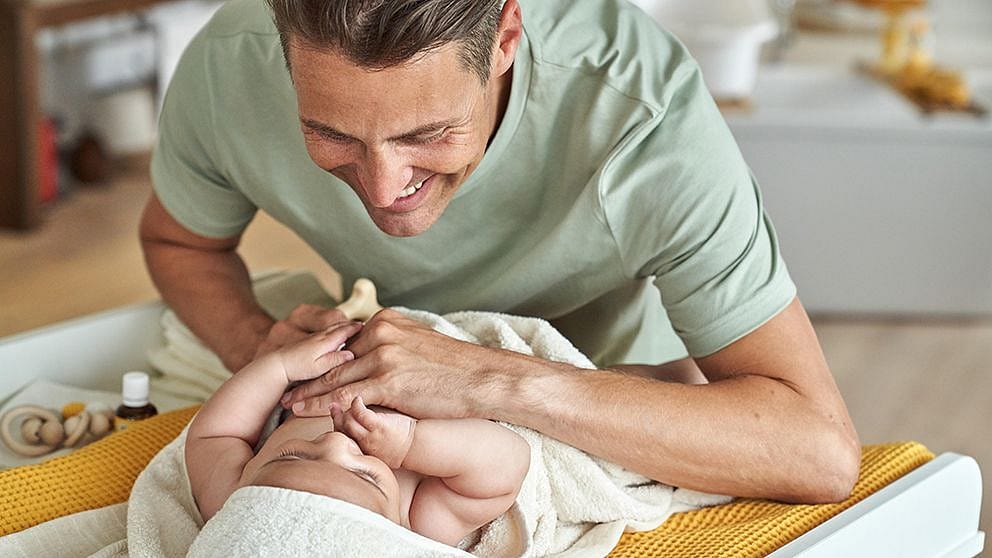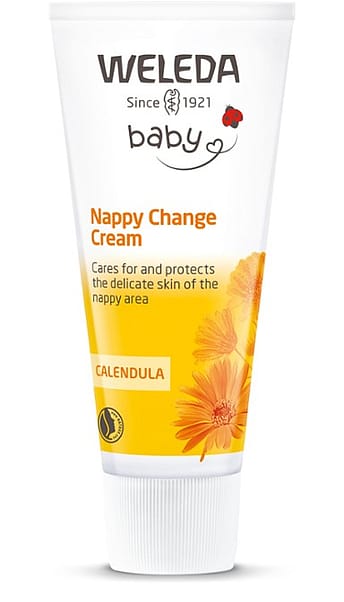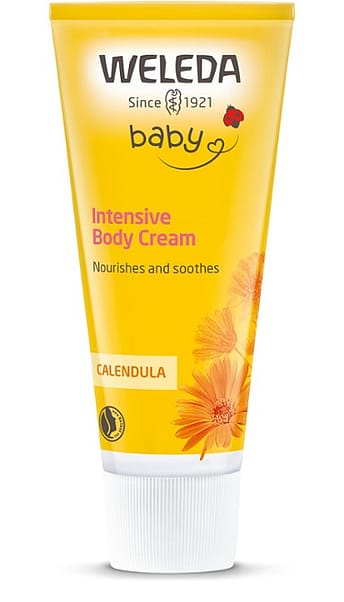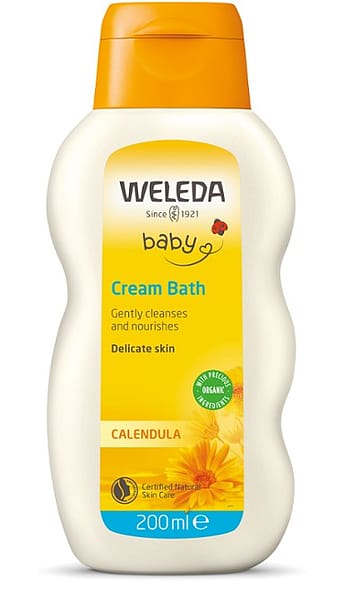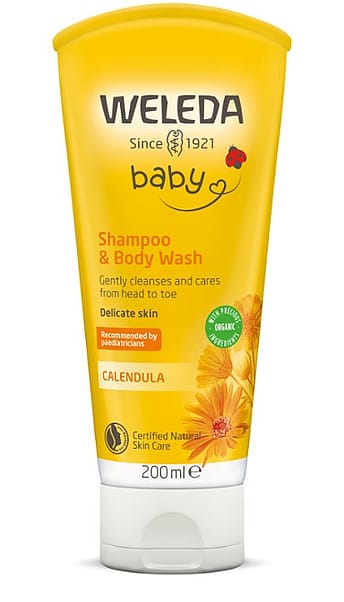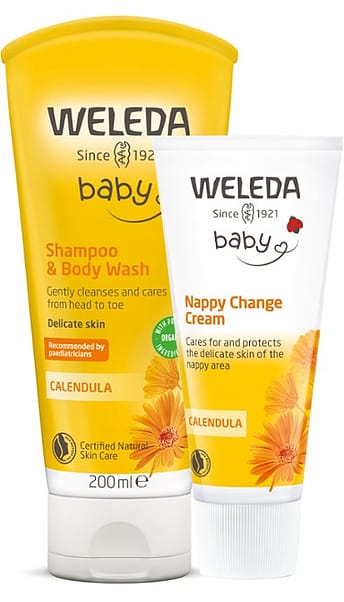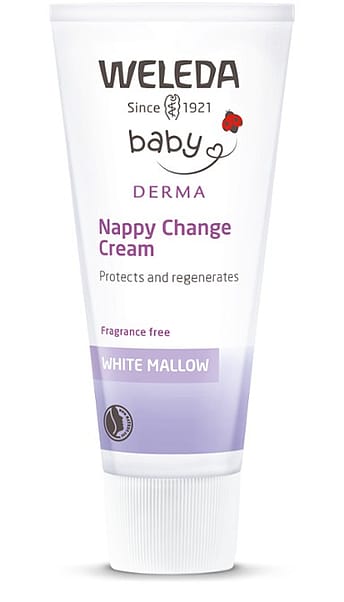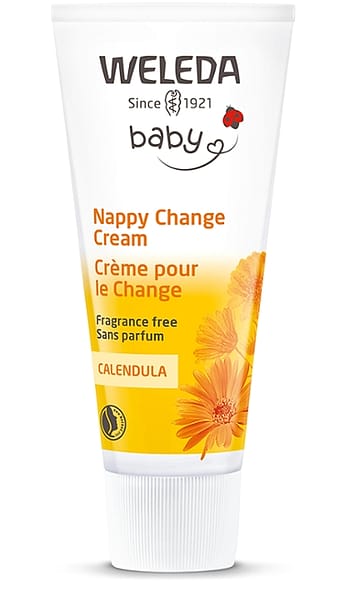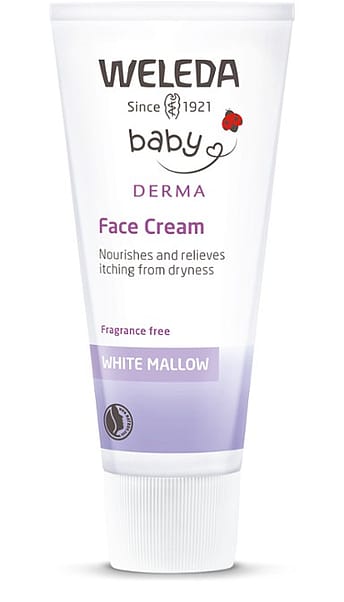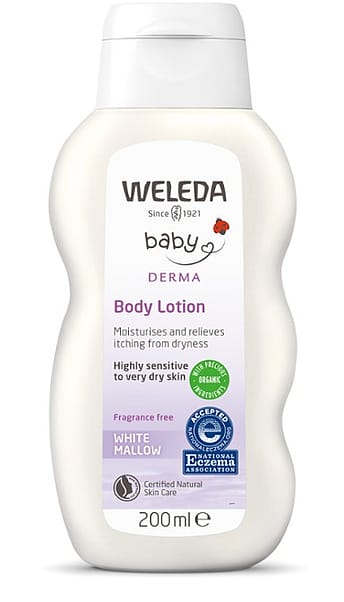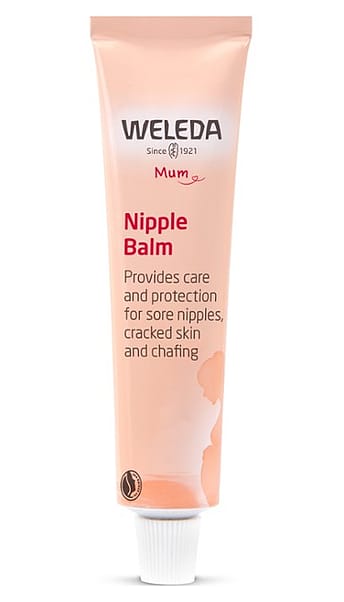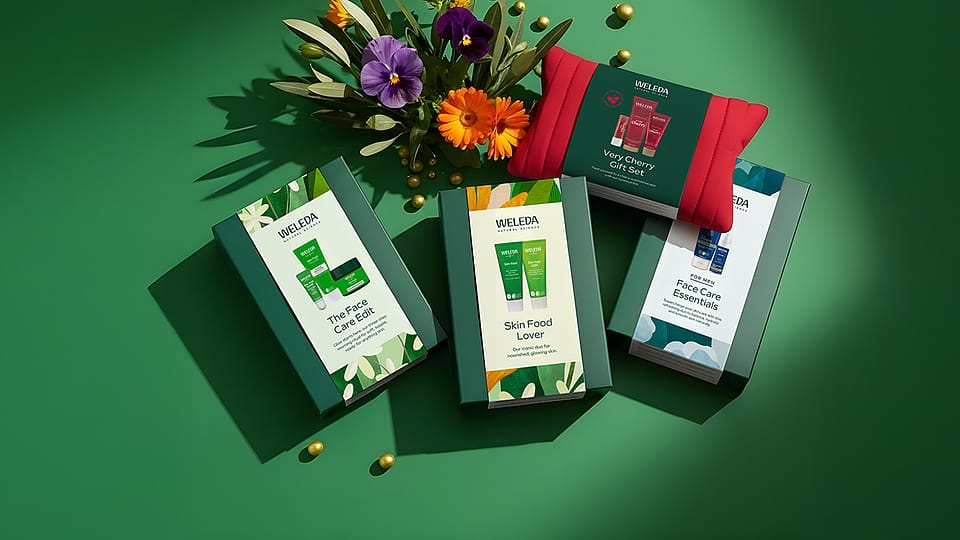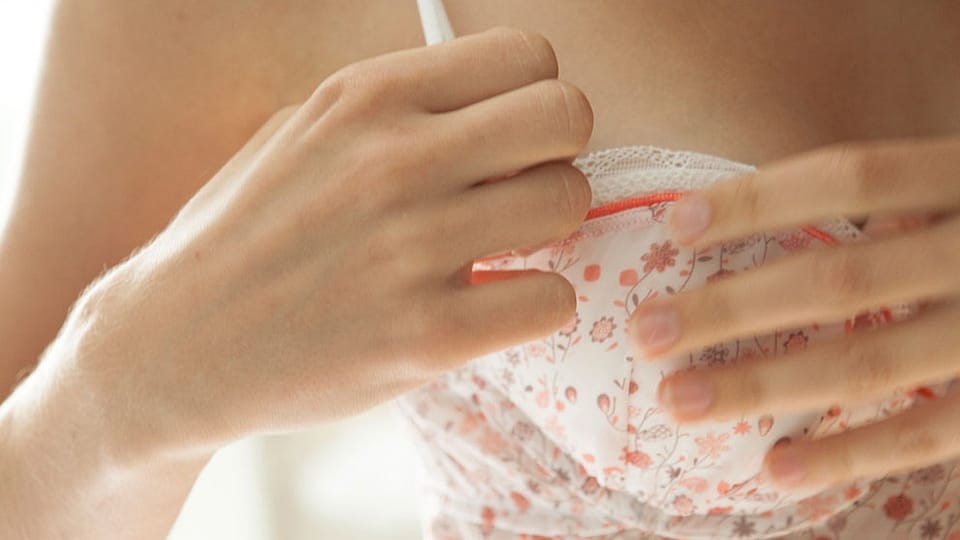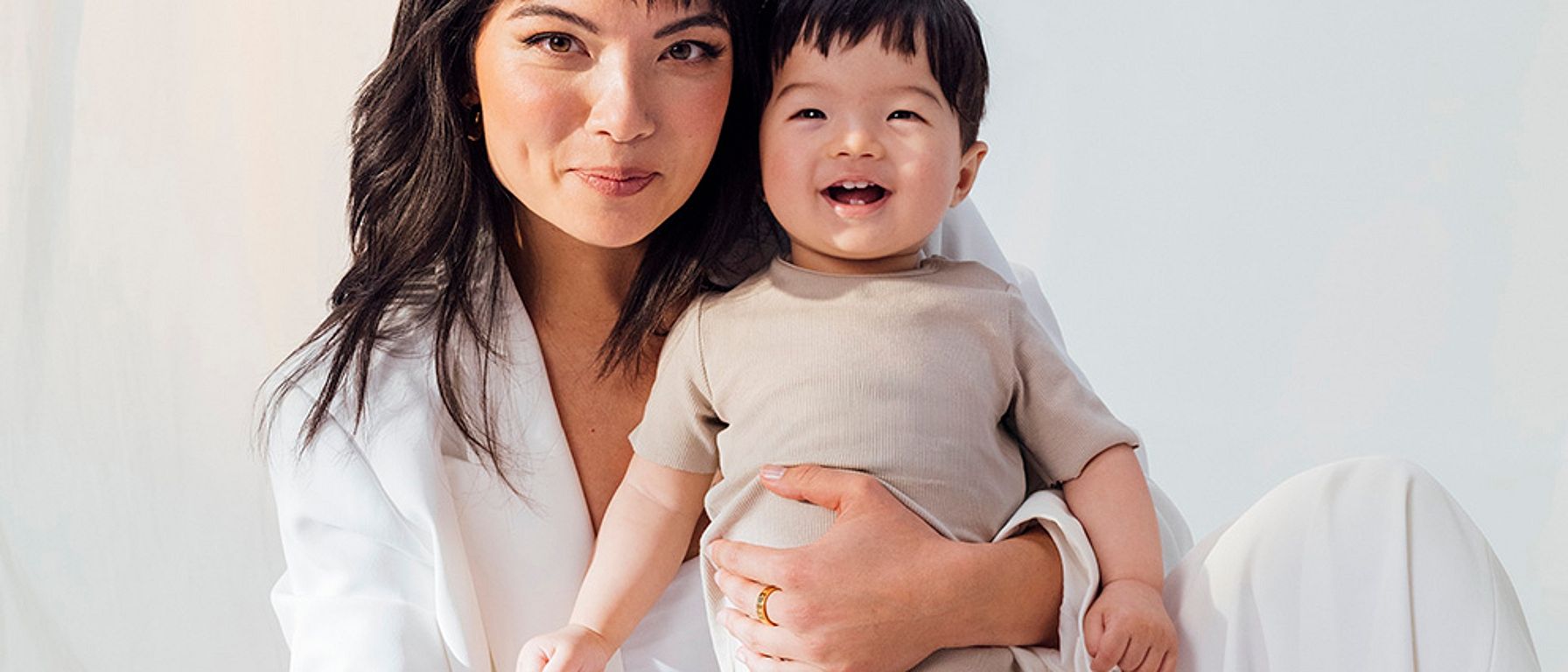
The Complete Guide to Baby Skincare and Nursing: Natural Care for Mother and Child
For over a century, Weleda has been nurturing the delicate balance between mother and baby with certified natural skincare. Drawing from our deep understanding of botanical wisdom and holistic health, we've created this comprehensive guide to help you navigate the journey of caring for your baby's skin and supporting your own wellbeing during nursing. Our time-tested approach combines traditional knowledge with modern understanding to provide gentle, effective solutions for the most precious moments of early life.
Understanding Your Baby's Delicate Skin
Your baby's skin is a marvel of nature—perfectly designed yet incredibly delicate. Unlike adult skin, a newborn's skin barrier is still developing, making it more vulnerable to environmental factors and more in need of gentle protection.
The Natural Development of Baby Skin
During the first year of life, your baby's skin undergoes remarkable changes. At birth, a newborn's skin is up to 30% thinner than adult skin and contains a higher percentage of water. This delicate structure serves important purposes but requires special care:
- The protective acid mantle is still forming
- Natural moisture regulation is developing
- Sensitivity to environmental stressors is heightened
- Temperature regulation relies heavily on skin function
This natural development process doesn't need correction—it needs gentle support and protection. Traditional wisdom has long recognised that less intervention often allows the skin's inherent intelligence to flourish.
Common Baby Skin Concerns
As parents, understanding common skin conditions helps you recognise when gentle support is needed:
Dry Skin
Newborns often experience dry, flaky skin as they adjust to life outside the womb. This is a natural process that typically resolves within a few weeks with minimal intervention.
Nappy Rash
The warm, moist environment of the nappy area creates ideal conditions for irritation. Up to 50% of babies experience nappy rash at some point, but proper care can significantly reduce its occurrence and severity.
Cradle Cap
These yellowish, scaly patches on a baby's scalp affect many infants and are not typically painful or itchy. Traditional approaches focus on gentle moisturising and minimal disturbance.
Eczema
Around 20% of babies develop some form of eczema, which can appear as dry, red, itchy patches. A holistic approach considers both skin care and environmental factors.
Heat Rash
Small red bumps can appear when sweat ducts become blocked, particularly in skin folds or when a baby is overdressed.
Each of these concerns responds well to gentle, natural care that works with your baby's developing skin rather than against it.
The Foundations of Natural Baby Skincare
When it comes to caring for your baby's delicate skin, our century of experience has taught us that following nature's lead creates the most harmonious results. The foundations of natural baby skincare rest on understanding the skin's natural processes and supporting it with pure, gentle ingredients.
The Gentle Approach: Less is More
Natural baby care suggests that babies need less intervention than we might think. This gentle philosophy embraces:
- Minimal bathing frequency (2-3 times weekly is often sufficient)
- Short bath times (5-10 minutes)
- Lukewarm water temperature
- Gentle, soap-free cleansers when needed
- Minimal product usage
This approach supports your baby's developing skin barrier by allowing natural processes to establish themselves with gentle support rather than disruption.
Choosing Natural Ingredients for Baby
The ingredients that touch your baby's skin matter deeply. Certified natural skincare offers benefits that synthetic alternatives cannot match:
- Plant-based oils similar in structure to the skin's natural lipids
- Gentle botanical extracts with traditional soothing properties
- Minimal, necessary ingredients rather than complex formulations
- Absence of potential irritants found in conventional products
Among the most beneficial traditional ingredients for baby skin are:
Calendula (Pot Marigold)
Used for centuries to soothe and protect delicate skin, calendula gently supports the skin's natural functions. Our biodynamically grown calendula contains a full spectrum of beneficial compounds that work in harmony with your baby's skin.
Chamomile
With its gentle calming properties, chamomile has long been treasured in traditional baby care. It soothes irritation while supporting the skin's natural balance.
Almond Oil
Rich in essential fatty acids and vitamins, sweet almond oil gently nourishes without clogging pores. Its composition is remarkably compatible with human skin.
Beeswax
Creating a breathable protective layer, beeswax helps shield delicate skin from environmental stressors while allowing it to function naturally.
White Mallow
With its gentle, cooling properties, white mallow offers traditional support for very sensitive or reactive skin.
These natural ingredients work not by overwhelming your baby's skin but by gently supporting its natural processes.
Creating a Natural Skincare Routine for Your Baby
Developing a simple, nurturing routine helps create a foundation for healthy skin while turning everyday care into moments of connection. The key is consistency with flexibility—responding to your baby's changing needs while maintaining a gentle approach.
Daily Care Essentials
Gentle Cleansing
Bath time can be one of the most nurturing moments in your baby's day. Using a mild, soap-free cleanser like Weleda Calendula Shampoo and Body Wash helps maintain your baby's natural skin balance while effectively removing impurities.
For cleansing between baths, particularly during nappy changes, gentle solutions like Weleda Calendula Baby Oil Fragrance Free help refresh without disrupting the skin barrier.
Natural Moisture Support
After bathing, when the skin is still slightly damp, is the ideal time to apply a gentle, natural moisturiser. Weleda Calendula Baby Lotion or Calendula Baby Oil helps seal in moisture while supporting the skin's natural functions. For dry patches or cooler weather, the richer Calendula Intensive Baby Cream provides deeper nourishment.
Nappy Area Protection
The nappy area benefits from special attention at each change. A breathable layer of protection helps create a barrier between delicate skin and potential irritants. Weleda Calendula Nappy Change Cream with zinc oxide offers a gentle formula that protects while allowing skin to breathe.
Soothing Support When Needed
For moments when extra care is needed—perhaps during teething-related flushed cheeks or minor irritations—keep a gentle, multi-purpose balm on hand. Weleda Calendula All Purpose Balm offers versatile support for these common situations.
Adapting Care to the Seasons
Like all of nature, your baby's skin responds to seasonal changes and benefits from thoughtful adjustments:
Summer Care
- Reduce moisturiser weight and frequency
- Pay extra attention to folds where heat rash may develop
- Consider natural powder such as cornstarch in hot, humid conditions
- Provide extra protection from sun exposure
Winter Care
- Increase moisturising frequency
- Consider richer formulations
- Pay special attention to exposed areas like cheeks
- Maintain healthy indoor humidity
Transitional Seasons
- Observe how your baby's skin responds to changing conditions
- Adjust products gradually as needed
- Be mindful of new sensitivities that may emerge
This seasonal awareness reflects the traditional understanding that we are part of nature's rhythms, not separate from them.
Nurturing a Mother's Skin: Natural Nursing Care
The breastfeeding journey brings both profound connection and unique challenges. Your skin, particularly in the nipple area, undergoes significant changes that deserve thoughtful support. Traditional wisdom offers gentle approaches that nurture both mother and baby during this special time.
Understanding Breastfeeding's Effects on Skin
During breastfeeding, nipple skin faces considerable demands:
- Increased sensitivity and tenderness
- Potential for dryness and cracking
- Repeated cycles of wetting and drying
- Mechanical stress from nursing
These natural challenges don't require harsh interventions—just gentle, consistent care that meets your body's needs.
Natural Nipple Care During Breastfeeding
Preventative Care
Beginning a nurturing routine before problems develop helps maintain skin integrity:
- Air-dry nipples briefly after feeding
- Apply a small amount of expressed breast milk, which contains natural healing properties
- Use certified natural nipple balm to support skin resilience
- Avoid cleaning with soaps or alcohol-based products that can strip natural oils
Support for Common Concerns
For moments when your skin needs extra care:
- For tenderness: Apply cool compresses of chamomile tea between feedings
- For dryness: Increase frequency of natural balm application
- For minor irritation: Ensure proper latch and consider lanolin-free alternatives like Weleda Nipple Balm
Choosing the Right Natural Support
An effective nipple balm should:
- Be safe for baby (no need to remove before feeding)
- Contain only natural ingredients
- Provide effective moisture barrier without blocking pores
- Support the skin's natural healing processes
Weleda Nipple Balm combines calendula and organic beeswax with gentle plant oils to create a breathable, protective layer that nurtures sensitive skin without introducing synthetic ingredients.
Whole-Body Support for Nursing Mothers
A holistic approach recognises that skin health during breastfeeding connects to your overall wellbeing:
- Stay well-hydrated
- Nourish your body with whole foods rich in healthy fats and micronutrients
- Consider traditional herbs like fennel and fenugreek that have historically supported nursing mothers
- Prioritise gentle self-care rituals that honour this intense but fleeting time
Remember that this care isn't merely cosmetic—it supports the profound physical connection between you and your baby
Natural Solutions for Common Baby Skin Concerns
When skin concerns arise, gentle, natural approaches often provide effective support while respecting your baby's developing systems. Skincare with carefully selected plant-based ingredients can address many common concerns without harsh interventions.
Preventing and Treating Nappy Rash Naturally
Nappy rash affects most babies at some point, but natural approaches can significantly reduce its frequency and severity:
Prevention Through Daily Care
- Change nappies frequently to reduce moisture contact
- Allow brief periods of nappy-free time when possible
- Cleanse gently with water or natural wipes
- Apply a thin layer of protective cream at each change
Natural Ingredients That Support Healing
- Zinc oxide creates a breathable protective barrier
- Lanolin provides moisture without blocking pores
- Calendula offers traditional soothing properties
- Chamomile supports the skin's natural processes
When to Use Different Approaches
- For daily protection: A light layer of Weleda Calendula Nappy Change Cream
- For mild redness: Slightly thicker application of protective cream
- For persistent rash: Consider temporary use of natural powder between cream applications to reduce moisture
- For severe rash: Seek professional guidance while continuing gentle care
Supporting Dry Baby Skin
Your baby's skin naturally fluctuates in moisture levels as it develops its own regulation systems:
Daily Support
- Use warm (not hot) water for bathing
- Apply natural moisturiser while skin is still slightly damp
- Focus on dry areas like knees, elbows, and cheeks
- Consider room humidity, particularly in winter or air-conditioned environments
Beneficial Natural Ingredients
- Sweet almond oil nourishes without heaviness
- Sesame oil provides traditional warmth and protection
- Beeswax creates a breathable moisture-sealing layer
- Lanolin mimics the skin's natural moisture retention
Adapting to Changing Needs
- Observe how your baby's skin responds to different environments
- Adjust moisturising frequency seasonally
- Consider a slightly richer formula during challenging weather
- Remember that some dryness during the newborn period is a natural adjustment
Natural Approaches to Sensitive Skin and Eczema
Some babies have inherently more reactive skin that benefits from an extra-gentle approach:
Creating a Protective Environment
- Use 100% cotton clothing next to the skin
- Wash new clothes before wearing
- Consider the impact of laundry products
- Maintain moderate humidity in the home
Gentle Care Practices
- Reduce bathing frequency during flare-ups
- Use lukewarm rather than warm water
- Pat skin dry instead of rubbing
- Apply moisturiser immediately after bathing
Supportive Natural Ingredients
- White mallow offers forms a moisturising and protecting layer on the skin which calms and soothes
- Coconut oil melts on the skin and leaves a notable cooling effect
- Borage seed oil supports the skin's natural functions
Products like Weleda White Mallow Body Lotion and Face Cream are specially formulated with these traditional ingredients to support even the most sensitive skin.
When to Seek Additional Support
While natural care meets most everyday needs, some situations benefit from professional guidance:
- Rashes that worsen despite gentle care
- Signs of infection (increasing redness, warmth, swelling)
- Skin concerns accompanied by fever or significant discomfort
- Rashes that spread rapidly or blister
In these cases, traditional care can complement professional recommendations, supporting your baby's overall wellbeing while addressing specific concerns.
Choosing the Right Products for Your Baby's Needs
With countless options available, finding truly natural products that support your baby's unique needs can feel overwhelming. Understanding certification standards, key ingredients, and how different formulations serve specific purposes helps navigate these choices with confidence.
Understanding Natural Certification
Not all "natural" products are created equal. Looking for legitimate certifications helps ensure you're choosing truly natural options:
NATRUE Certification
- This independent certification guarantees:
- Transparent criteria for natural and organic ingredients
- Strict limitations on processing methods
- Absence of synthetic fragrances, colors, and preservatives
- Environmentally responsible practices
All Weleda baby care products carry this rigorous certification, reflecting our uncompromising commitment to natural formulations.
Matching Products to Specific Skin Types
Different babies have different skin needs:
For Normal to Dry Skin
- Weleda Calendula Baby Care line offers balanced nourishment
- Calendula Baby Oil provides deeper moisture when needed
- Calendula Baby Lotion offers lighter daily hydration
For Sensitive or Reactive Skin
- Weleda White Mallow Baby Care provides extra-gentle support
- Fragrance-free formulations reduce potential triggers
- White Mallow Face Cream offers targeted care for delicate facial skin For
Cradle Cap Support
- Gentle massage with Calendula Baby Oil helps soften scales
- Calendula Shampoo and Body Wash cleanses without stripping natural oils
- Consistent, gentle approach usually resolves this common condition
Essential Products for Your Natural Baby Care Kit
A thoughtfully curated collection of multi-purpose products often serves better than numerous specialised items:
Daily Essentials
- Gentle cleanser (Weleda Calendula Shampoo and Body Wash)
- All-purpose moisturiser (Weleda Calendula Baby Lotion)
- Nappy protection (Weleda Calendula Nappy Change Cream)
Supportive Additions
- Multipurpose oil (Weleda Calendula Baby Oil)
- Protective face cream for outdoor conditions (Weleda Calendula All-Purpose Balm)
- Nipple balm for nursing mothers (Weleda Nipple Balm)
This minimalist approach aligns with the traditional understanding that simplicity often serves delicate skin best.
Reading Product Labels with Confidence
Understanding ingredient listings helps you make informed choices:
What to Look For
- Short, straightforward ingredient lists
- Plant ingredients listed by botanical and common names
- Natural preservative systems when needed
- Clear explanation of ingredient purposes
What to Question
- Ingredients you cannot pronounce or identify
- Synthetic fragrances (often listed simply as "fragrance" or "parfum" - Weleda only uses natural essential oils to fragrance products)
- Petroleum-derived ingredients
- Unnecessarily complex formulations
Remember that with truly natural products, what's not included is often as important as what is.
Creating Nurturing Skincare Rituals
Beyond the practical aspects of skin care, thoughtful rituals create moments of connection that nurture both baby and parent. These daily practices become a language of love expressed through touch, presence, and care.
Bath Time as Bonding Time
Bath time offers precious moments of undivided attention and sensory exploration:
Setting the Stage
- Create a calm environment with warm (not hot) water
- Gather all supplies before beginning
- Consider soft lighting and comfortable room temperature
- Allow unhurried time for this special ritual
Turning Cleansing into Connection
- Maintain eye contact and gentle conversation
- Use smooth, reassuring movements
- Allow your baby to feel the sensations of water
- End with a warm, gentle towel embrace
Natural Elements That Enhance the Experience
- The gentle scent of calendula and lavender create a soothing atmosphere
- Natural formulas feel different on the skin—lighter and less residual
- Plant ingredients connect your baby to the natural world
Baby Massage as Natural Skin Support
Gentle baby massage offers profound benefits for both skin health and emotional wellbeing:
Benefits for Baby's Skin
- Improves circulation
- Enhances moisture absorption
- Supports natural skin function
- Allows careful observation of skin condition
Creating a Nurturing Routine
- Choose a time when your baby is content but alert
- Warm a small amount of natural oil between your palms
- Use gentle, rhythmic strokes moving outward from the center
- Respond to your baby's cues about pressure and duration
Massage Techniques
- Focus special attention on the abdomen in clockwise circles to assist with digestion and the discomfort of gas
- Include gentle leg movements to further ease digestive discomfort
- Move from the center outward to support circulation
- Include gentle touch to often-overlooked areas like hands and feet
Natural oils like Weleda Calendula Baby Oil provide the perfect medium for this nurturing practice, absorbing properly without creating occlusion.
Incorporating Care into Daily Rhythms
Consistent care routines create security for babies while simplifying decisions for parents:
Morning Freshening
- Gentle cleansing of face and hands
- Light application of moisturiser if needed
- Special attention to any dry areas
After-Nap Care
- Quick check of nappy area
- Gentle refreshing of face if needed
- Brief moment of connection through touch
Evening Wind-Down
- Bath if it's a bath day (typically 2-3 times weekly)
- Gentle full-body moisturising
- Calm, consistent bedtime sequence
These rhythms reflect the traditional understanding that regularity provides comfort and security for developing children.
The Connection Between Inner and Outer Wellbeing
True skin health reflects overall wellbeing—a holistic truth recognised long before modern science confirmed the connections between diet, environment, stress, and skin condition. Supporting your baby's skin involves nurturing the whole child and creating health-supporting surroundings.
Nurturing from Within
What your baby consumes—whether breast milk, formula, or beginning foods—influences skin health:
Breastfeeding Benefits for Skin
- Provides perfectly balanced nutrition
- Contains beneficial fatty acids that support skin development
- Offers natural immune factors that help the skin's defense system
- Creates a foundation for gut health, which connects to skin health
Nutritional Support for Nursing Mothers
- Abundant hydration supports milk production and skin health
- Omega-rich foods like walnuts, flaxseeds, and oily fish provide essential skin nutrients
- Colorful fruits and vegetables offer antioxidants that support overall wellbeing
- Traditional nursing-supportive herbs like fennel and fenugreek have been used for generations
Transitioning to Solid Foods
- Introduce potential allergens thoughtfully and observe skin responses
- Offer a rainbow of fruits and vegetables for diverse nutrient support
- Include healthy fats that provide building blocks for skin health
- Stay attentive to any skin changes that might indicate sensitivities
Creating a Skin-Friendly Environment
Your baby's surroundings significantly impact skin health and comfort:
Natural Fabrics and Materials
- Choose cotton, bamboo, linen, or hemp for clothing and bedding
- Consider how different fabrics interact with your baby's specific skin type
- Wash new items before use to remove processing residues
- Use fragrance-free, gentle laundry options
Temperature and Humidity Considerations
- Maintain moderate humidity (40-60%) to support skin moisture balance
- Avoid overheating, which can trigger perspiration and irritation
- Dress in breathable layers that can be adjusted easily
- Be mindful of sun exposure, finding balance between protection and beneficial light
Reducing Environmental Irritants
- Consider home cleaning products and their potential impacts
- Be mindful of strong scents, even natural ones
- Pay attention to household dust and pet dander
- Notice patterns between environmental factors and skin reactions
This environmental awareness reflects the traditional understanding that we exist in relationship with our surroundings, not separate from them.
Frequently Asked Questions
How often should I bathe my baby?
For most babies, 2-3 baths weekly provides sufficient cleansing while preserving the skin's natural oils and beneficial microorganisms. Daily bathing is generally unnecessary and may contribute to dryness. However, the face, hands, and nappy area can be gently cleansed as needed between baths. Watch your individual baby's skin response and adjust accordingly.
Are natural products effective for nappy rash?
Yes, natural ingredients like zinc oxide, calendula, and chamomile have been used traditionally for generations to soothe and protect the nappy area. These ingredients work with your baby's skin rather than overwhelming it with synthetic interventions. Weleda Calendula Nappy Change Cream combines these traditional ingredients in a certified natural formula that creates a breathable protective barrier.
How can I tell if my baby has sensitive skin?
Signs of sensitive skin include quicker reactivity to environmental changes, tendency toward redness or dry patches, and sometimes itchiness. Babies with sensitive skin often show more pronounced reactions to new products, environmental changes, or even certain foods in a nursing mother's diet. If you notice these patterns, a gentle approach using minimal products specifically formulated for sensitive skin, like the Weleda White Mallow line, often proves beneficial.
What makes a nipple balm safe for breastfeeding?
A safe nipple balm should not need to be removed before nursing, contain only ingredients that are safe if ingested in small amounts, and avoid potential allergens or irritants. Natural options like Weleda Nipple Balm are formulated with food-grade ingredients that support healing while being safe for both mother and baby. The absence of synthetic preservatives, fragrances, and petroleum derivatives makes natural balms a thoughtful choice during this important time.
When should I be concerned about my baby's skin issues?
While many baby skin conditions resolve with gentle care, some situations warrant professional attention. Seek guidance if you notice rapidly spreading rashes, signs of infection (increasing redness, warmth, swelling), skin concerns accompanied by fever, significant discomfort, or rashes that worsen despite appropriate care. These guidelines help distinguish between typical variations that respond to traditional care and situations that benefit from additional support.
Embracing the Journey
The early days of parenthood offer precious opportunities to establish nurturing care routines that honour both your baby's unique needs and nature's wisdom. By choosing certified natural products, developing gentle rituals, and understanding the connections between inner and outer wellbeing, you create a foundation for lifelong skin health.
Remember that this journey is about progress, not perfection. Each baby's needs are unique, and discovering what works best for your child is a process of loving attention and thoughtful observation. Trust your instincts, observe your baby's responses, and adjust your approach as needed.
At Weleda, our century of experience creating natural skincare for babies and mothers has taught us that working with nature's rhythms—rather than against them—creates the most harmonious results.
When we support the skin's natural processes with gentle, certified natural formulations, we honour both the remarkable capabilities of this living organ and the precious beings it protects.
May your journey of caring for your baby's skin be filled with moments of connection, discovery, and joy—a natural expression of the deep bond you share.
For more specific guidance about incorporating Weleda's certified natural products into your baby care routine, explore our complete Calendula Baby Care and White Mallow Baby Care collections, or discover our specialised support for nursing mothers.


